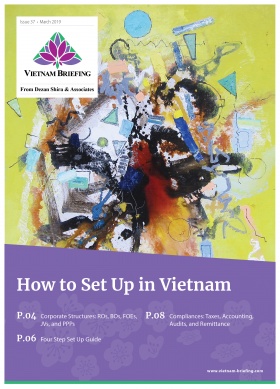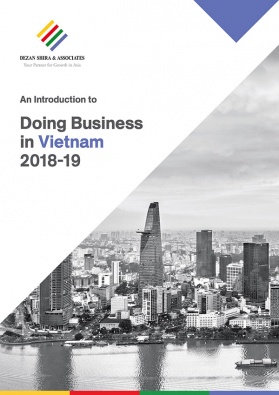Choosing the Right Sourcing Model in Vietnam
- Foreign investors can choose several legal structures to build a successful Vietnam sourcing strategy.
- Investors should choose the most suitable business model and compare each option against their primary sourcing needs.
- The optimal choice of structure comes down to two key factors: local hiring needs and cost-effectiveness.
While Vietnam has several legal structures that can be used as a necessary building block to a successful Vietnam sourcing strategy, it can often be difficult for companies (particularly those new to Vietnam) to decide on the optimal solutions needed to support their mainland sourcing activities.
With so many quality control and trading agents available offering one-stop sourcing services and business-to-business (B2B) online platforms that allow direct contact with suppliers, many will argue that it could be just as effective to utilize a subcontracting agreement and intermediate parties to get the job done.
Although this can be true and is a perfectly workable option, to be more competitive in global supply chains, many small and medium enterprises (SMEs) now require an on-the-ground presence either to gain better control of their supply chain or to be able to continue servicing their international customers who have also entered the Vietnamese market.
Therefore, to select the most suitable business model, it is important to carefully balance the capability of each option against the primary needs of the sourcing activities.
For example, foreign SMEs that consider Vietnam an unknown market may prefer the low capital risks associated with a Representative Office (RO). However, at the same time, the wider business scope and operational flexibility that a Limited Liability Company (LLC) offers may also be tempting.
At the other extreme, an overseas company that has been purchasing directly from Vietnam for many years may wish to take full control of the supply chain through a trading company, but may be deterred by the heavy operational complexity of such an entity – a trading company involved in exporting goods is directly involved with Vietnam’s complex Value Added Tax (VAT) system and has to comply with customs requirements.
Since Vietnam does not require a set amount of money to be invested, SMEs usually do not put a large amount of registered capital into the subsidiary company. However, companies must ensure that they put in enough money to handle any business expenses arising from operations. The main question is what scale the business scope will take and what level of capital is required to fund this?
Below, we address some of the common concerns facing foreign buyers that are choosing a formal structure in Vietnam and compare the operational differences between the structures.
The balance between registered capital and business scope
Many traditional buyers tend to lean towards the RO structure, purely driven by the preference of not having to inject registered capital into Vietnam. For this reason, the RO structure is often recognized as the “safe” and “cheap” model, and the best option for a Vietnam office whose primary purpose is to explore market possibilities and help get the overseas head office more value for their purchases.
For ROs, expenditures are funded directly by the overseas headquarters at regular intervals. For a service company or a trading company, most of this funding would instead come from the registered capital, which is committed right at the beginning. Registered capital can be used for ongoing operational expenses and is much closer to the definition of working capital.
Moreover, the costs of financing the ongoing activities of an RO are very different than an LLC, since the RO cannot deduct input VAT while the LLC will deduct costs and pay tax on profits.
With this in mind, companies are advised to consider at least their short to medium-term strategy for the Vietnam market – the expected expenditure level and desired scope of expansion for the next few years should be fully evaluated.
An RO is generally seen as a good starting point for entry. However, the added benefits of a wider business scope provided by a service company or a trading company could prove much more valuable and self-sustainable than the traditionally “safe” and “cheap” RO.
For these businesses, usually a trading company model is preferred since this structure allows for the widest possible scope for sourcing. Since the business scope is wide, the level of acceptable registered capital required by the Vietnamese authority will often be higher than that for a service company (typical minimums vary depending on the type of project and its location).
The service company model also has its own merit and may be more suitable for companies that want a simpler LLC model. Since the service company cannot trade products directly, the compliance involved is quite low and it can also play the role of an intermediate quality control and service agent for the parent company. Although the same effect can be achieved with an RO, this model does have the added capability of being able to receive commissions or other service revenues in Vietnamese Dong (VND). As such, this model can be more tax-efficient than an RO.
Supply chain control versus human resources risks
To obtain a comfortable level of control and assurance over the quality and delivery of products ideally, foreign investors would need to employ reliable staff on the ground to manage quality control, supplier liaison activities, price negotiations, supplier selection, and market research.
As Vietnamese markets mature and price competition intensifies, foreign companies not yet in Vietnam will need to continually assess whether it is still affordable to function via long-distance relationships with their Vietnamese suppliers, or whether more substantial operational control is needed to ensure that competitive pricing is achieved. In particular, adequate control of local HR risks is usually one of the main concerns for companies hoping to strengthen their supplier networks in Vietnam.
Due to the limited business scope of an RO, the amount of staff that it is feasible to employ is less than that of an LLC. There is little reason to employ vast amounts of people in an RO due to the fact that it cannot engage in the types of activities that would require a large staff.
Another factor that affects the determination of the scope of the supply chain is the product the supplier wishes to source in Vietnam. Some types of products will necessarily require more complex supply chains than others. LLCs are thus the model of choice for projects with longer and more complex supply chains. An RO is best for those companies which have small and simple supply chains.
Under the laws of Vietnam, an RO, a service company, and a trading company can hire foreigners and local staff as long as the procedures to hire them are well documented and accepted by the competent authorities. A key consideration for any business is the amount of staff required to ensure a smooth operation of the supply chain and keep HR risks to a minimum.
However, it is not always easy to hire foreigners to work in local entities since the Vietnamese government has strict regulations controlling the employment of foreign employers and employees.
Many companies may also require staff to be based at multiple locations around the country (e.g. on-site at the factory or traveling for quality control purposes). These types of practical issues must be fully addressed before committing to the appropriate structure.
Complexity, compliance, and tax efficiency
The changing globalization trends in procurement processes and the growing competitiveness of other supplying nations means that the trading company model has become much more pertinent, as it allows for two-way traffic in both the inbound and outbound sourcing of products.
The trading company model also makes it possible for companies to explore the potential to adapt their products or services for domestic consumption. It is very common for foreign companies that have been sourcing through a trading company for a few years to restructure in order to catch the opportunities offered by the local market.
However, it should be noted that with the added flexibility and complexity of a trading company, the operational and tax compliance requirements are also higher than the other two models. Activities such as managing invoices issued and VAT deductions, warehouse and inventory control, dealing with customs duties, and keeping track of logistics all become the trading company’s responsibility once a direct sourcing model is employed. Competent internal staff, as well as the support of reliable external consultants is key to establishing a successful business.
Remaining tax compliant is also important because Vietnamese authorities tend to keep a closer eye on the activities of foreign companies. Therefore, foreign companies should note the different types of taxes and filings that can apply for various trading, commission and service activities.
With regard to bank accounts, an RO is limited to certain types of banking activities. The laws only allow them to open an account (in foreign currency and/or VND) to pay, but not receive, money. This account is only to be used for the RO’s activities. LLCs are not limited to this type of restriction.
Conclusion
The optimal choice of structure really comes down to two key factors: local hiring needs and cost-effectiveness. If it is not a requirement to have employees based in the mainland, then dealing from overseas is likely to be the most tax-efficient option for SMEs sourcing from Vietnam.
However, this approach also has the highest risks in terms of quality and price control. If employees are needed on the ground, then (assuming that the total number of employees needed is still relatively low) an RO becomes a very relevant structure due to its simplicity and low compliance requirements.
For companies that need more from their Vietnam office, the trading company model would generally be the best option for businesses that are focused solely on sourcing activities. The trading company model offers the greatest potential to maximize supply chain control and minimize risks. The service company model is not as useful in this regard, however it can still be a good interim solution for companies that are not yet ready to tackle the Vietnamese VAT system and other operational compliance requirements.
There is no single successful sourcing strategy, and your business can be structured as simply as an RO or as elaborately as a multinational sourcing plan that uses a combination of the above mentioned legal structures. The most appropriate strategy may be a progression between the different models over time. Regardless of the strategy, to ensure that the chosen structure adds sufficient value, parent companies will need to regularly monitor the performance of their sourcing offices and continually develop existing and new supplier sources to remain competitive.
Note: This article was first published in June 2014, and has been updated to include the latest developments.
About Us
Vietnam Briefing is produced by Dezan Shira & Associates. The firm assists foreign investors throughout Asia from offices across the world, including in Hanoi and Ho Chi Minh City. Readers may write to vietnam@dezshira.com for more support on doing business in Vietnam.
- Previous Article Vietnam’s Year in Review and Outlook for 2020
- Next Article US – China Trade War Inspires Vietnam Growth







